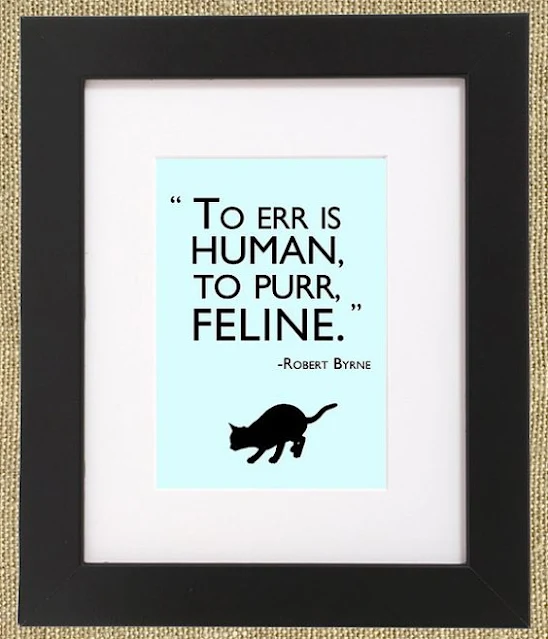This is NOT about why cats purr but how they do it. I'll say it again for Google, this article is about how cats purr. And I'll tell you right away that the scientists are slightly unsure even today how they do it. There have been several theories postulated over the years.
One looks very outdated now which is based upon turbulent blood passing through a cat's veins and heart causing the sound of the purr. I think we can dismiss that categorically for obvious reasons.
Another theory was called the "false vocal chord (cord) theory". This theory refers to the presence of a 2nd pair of chords thought to be the secret behind the extraordinary purring mechanism. That theory states that purring is no more than noisy breathing of the type that humans indulge in when they are asleep i.e. snoring.
I think we can dismiss that theory too. The modern theory is the one stated in the video below.
Note: This is a video from another website. Sometimes they are deleted at source which stops them working on this site. If that has happened, I apologise but I have no control over it.
This states that the laryngeal muscles are the source of the famous cat purr. These muscles are responsible for the opening and closing of the glottis, which is the space between the vocal cords. They separate the vocal cords. Studies have apparently shown that the movement of the laryngeal muscles signal from a unique neural oscillator in the cat's brain.
Like I said it is all very mysterious and hard to visualise. I would love to see an animated film on it to allow me to better understand it. One important factor about the cat purr is that it takes place on the in breath and out breath i.e. on inhaling and exhaling which means that it is produced during the entire respiratory cycle. Vocalisations such as meowing occur on the exploration of the breath.
Kittens purr while suckling. They drink and vocalise the purr at the same time.
 |
| Image in public domain and created by MikeB. |
There have been some studies (not many!) on how cats purr. One was 1st published in January 1991 titled How Cats Purr. It's published on the ZSL Let's Work for Wildlife website. It is highly complicated but they measured the purring in domestic cats, mountain lions and cheetahs. Some large cats can purr but the big cats can't. They can roar instead although the roar is a long-range call whereas the purr is obviously a short-range vocalisations.
The study states that the frequency of the domestic cat purr is 26·3 ±; 1·95 (S.D.) Hz. The frequency at mid-expiration exceeds that at mid-inspiration by 2.4+ or -1.3 Hz. Mid-expiration means the middle of the outgoing breath and mid-inspiration is the middle of the incoming breath. The frequency of a domestic cat's purr does not change with the age of the individual.
Cats can purr simultaneously with other vocalisations. They can also of course drink simultaneously with purring. The scientists used two-channel acoustic measurements and they confirmed that the "primary mechanism for sound and vibration production is a centrally driven laryngeal modulation of respiratory flow."
This supports the statement made above. They are saying that the laryngeal muscles alter the flow of airflow while breathing causing the purring sound.
On an associated subject, one study published June 28, 2020 titled Emotion Recognition in Cats states that domestic cats are able to recognise human emotions in detecting visual and auditory signals. In other words, they are recognising the sounds that humans make and their body language and movement in order to assess human emotions. That's what I glean from the summary. I would argue that they also employ their knowledge of the history of the relationship through rhythms, habits and routines.
Domestic cats are very much into the rhythms and routines of life in a human home. They understand and recognise the movements of the human companion and caretaker. When that changes, they can read something into it when combined with the human's voice i.e. vocalisations and their body language. That's my take on the conclusions to the study but I've added a little bit to it.
If you can add some info, it would be very welcome. I have written on this three times before!! Click this link for the last in that trio.
It's interesting but judging by the viewing statistics very few people want to know how cats purr. I put quite a lot of effort into this page but nobody is viewing it! I don't mind that much but it would be nice if they did. And while I'm adding an update, I will tell you why cats purr. It is not simply because they are content, although cats do purr when they are content, it is also delivered when they need friendship. You could say purring is a thank you for friendship given and a request for friendship needed. That's why you will see (correction: hear) domestic cats purring sometimes when they are frightened and in pain. It is said that the frequency of purring can heal which may explain why they sometimes purr when they are in pain.



No comments:
Post a Comment
Your comments are always welcome.